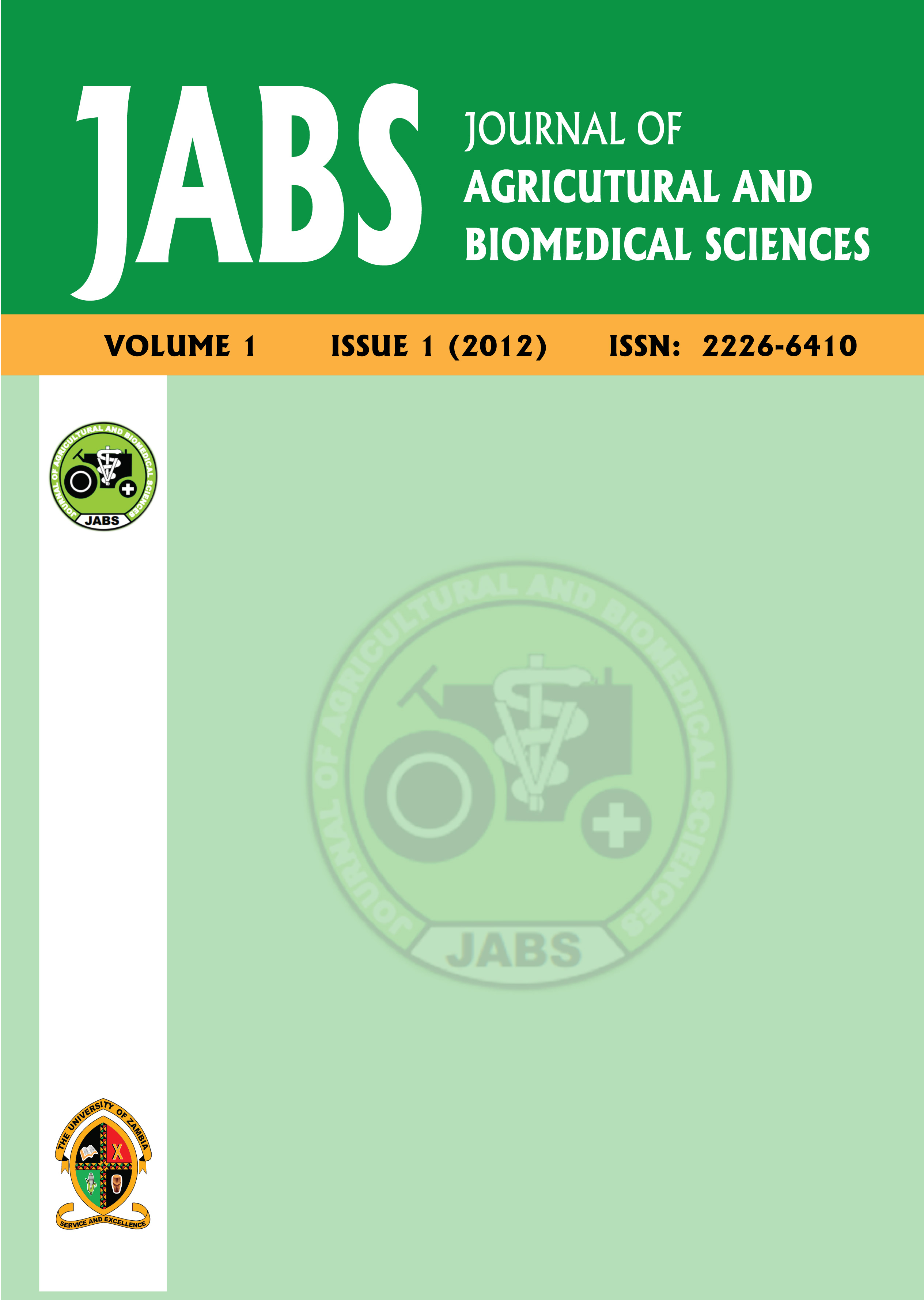Deciphering early childhood infection by the Kapsosi's sarcoma associated human herpesvirus in Zambia
Abstract
Human herpesviruses are large double-stranded DNA viruses that are ubiquitous in nature. There are currently eight known human herpesviruses belonging to three subfamilies: alpha, beta and gamma herpesvirinae. They were subdivided based on morphology, biological properties, genome structure and sequence homology. Human herpesvirus-8 (HHV-8), also known as Kaposi's sarcoma-associated herpesvirus (KSHV), is the most recently described human herpesvirus. HHV-8 was co-discovered by Chang and Moore in 1994, from lesions of a Kaposi's sarcoma (KS) patient by representational differential analysis. HHV-8 DNA sequences in the KS tissue, which were not found in normal skin tissue, could then be amplified. Human herpesvirus-8 (HHV-8) is the infectious etiologic agent of all forms of Kaposi's sarcoma (KS), primary effusion lymphoma and multicentric Castleman's disease. KS is an AIDS-defining illness and is the most common malignancy present in HIV infected patients. During the early stages of the AIDS epidemic, KS was the most common AIDS-defining illness. In fact, it was the sudden appearance of Kaposi's sarcoma (KS) and shortly thereafter, the appearance of high-grade non-Hodgkin's lymphoma (NHL) in a handful of young homosexual men who otherwise were in good health signalled the start of the AIDS epidemic. Due to the ongoing HIV epidemic in sub-Saharan Africa, KS has become one of the most frequently diagnosed cancers in this region. Global seroprevalence of HHV-8 varies greatly and is generally high in areas where non-HIV associated forms of KS (classic or endemic forms) have been common. HHV-8 seroprevalence in the United States and Northern Europe is generally low but ranges from 20 to 80 percent in adult populations in Africa and Mediterranean regions. Zambia is a part of the “KS belt” where endemic KS was prevalent and where a significant increase in KS incidence in adults and children has coincided with the emergence of the HIV-1 epidemic. By 1992, KS accounted for approximately 25% of all childhood cancers diagnosed in Lusaka, the capital of Zambia. The modes of transmission of HHV-8 may be different in different parts of the world depending on the endemicity of that region and are still being investigated but both horizontal and vertical transmission has been reported. Horizontal transmission via heterosexual and homosexual contact has been reported in adults. Vertical transmission to children seems to occur at a very low rate; a likely source of non-sexual transmission is via saliva, and rare transmission may occur also through breast milk. A report from Uganda has provided evidence for HHV-8 transmission through blood transfusion. HHV-8 can be found in the PBMCs, saliva, oropharyngeal mucosa, semen and prostate glands which represent the source of both vertical and horizontal transmission.
Published
2012-03-31
How to Cite
1.
Minhas V, Minhas V. Deciphering early childhood infection by the Kapsosi’s sarcoma associated human herpesvirus in Zambia. Journal of Agricultural and Biomedical Sciences [Internet]. 31Mar.2012 [cited 18Apr.2025];1(1):43-6. Available from: https://agric.unza.zm/index.php/JABS/article/view/336
Section
Biomedical Sciences
Copyright: ©️ JABS. Articles in this journal are distributed under the terms of the Creative Commons Attribution License Creative Commons Attribution License (CC BY), which permits unrestricted use, distribution, and reproduction in any medium, provided the original author and source are credited.

